Willow "Weeping Gnome"
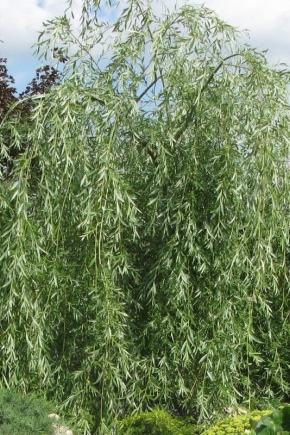
Most landscape designers use willow, as it attracts attention with its unsurpassed beauty, being a great decorative solution in a wide variety of places. In this article, we will take a closer look at the Weeping Gnome willow.
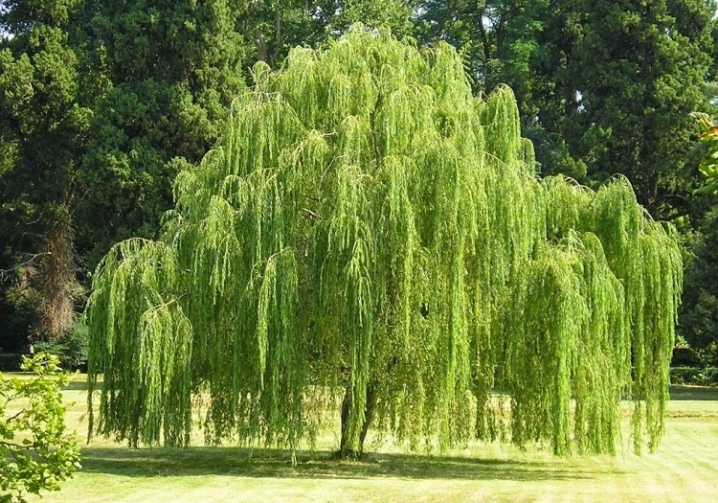
Description
Willow can be both a shrub and a tree. It depends specifically on the variety. Willow "Weeping Gnome" belongs to the hybrid varieties, since it appeared thanks to the efforts of the breeders of the Urals. This variety belongs to dioecious plants. It has yellow-green flowers that form the so-called catkins. Willow blooms in the second decade of May. Usually, leaves are formed at the same time.
Mostly weeping gnome willows are male, so the fruits are quite rare.
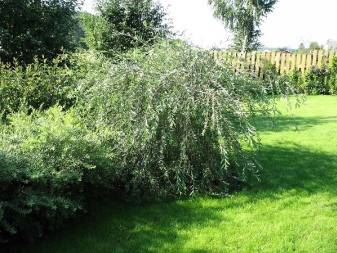
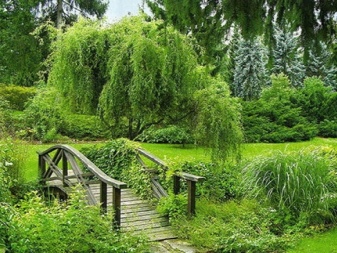
This small willow species has some differences from its parents.
- The difference is that it has a more "weeping" crown. The very lush foliage gives this variety an uniqueness, for this reason the willow got such an interesting name. The crown reaches two meters in diameter. Leaves are small, practically not omitted. At the top they have a green tint, and at the bottom they have a bluish-green tint. The leaves are 6-10 mm long and 4-6 mm wide.
- This species can be called a dwarf because the plant is undersized. This is what makes it stand out among its relatives. Usually its height does not exceed 3.5 meters, although the average height is only 2 meters. The trunk is small, up to 6–8 cm in diameter.
- An indisputable advantage is the increased winter hardiness.
Interesting! The plant has yellowish-brown, annual shoots. They are located on the lower branches, so they practically reach the soil. They can be described as long and thin.
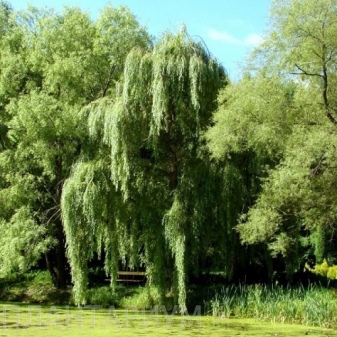
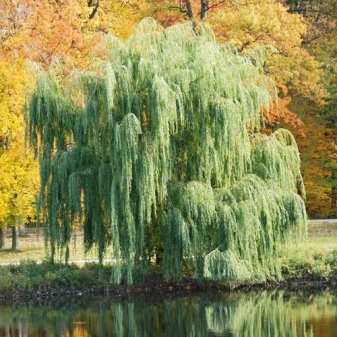
Planting and leaving
Willow "Weeping Gnome" is a year-round decoration of the landscape. So that she does not get sick and pleases the eyes of those around her with her luxurious beauty, she should be planted in the right place. This plant likes to grow separately, away from other trees. It grows well near small bodies of water. The park area will be a great place. This variety becomes an adornment of many gardens and squares. It should be noted that it grows well in the sun. Willow dies in the shade, so you always need to ensure the flow of sunlight to the tree.
"Weeping gnome" grows superbly in fertile soil with moderate moisture levels. Even if the water stagnates, the plant will not disappear. In soil with a poor set of nutrients, a tree can also grow. But you need to understand that if the willow grows away from water bodies, then in the hot season it will need regular watering.

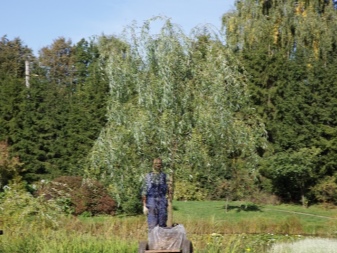
Willow "Weeping Gnome" can be planted in different ways. For example, if a tree is already purchased in a container, then first it should be revived before planting. The roots of the plant must be kept in a solution to stimulate growth, for example, "Epina". After that, a place should be prepared, while the depth of the hole should be such that the root collar is above the ground after planting. If the willow is sold in a pot, then it does not need an urgent transplant, it can be carried out throughout the summer.
The beauty of a willow lies primarily in its crown. To make her look pleasing, you need to regularly cut her hair. With its help, the crown becomes more lush, and the foliage becomes thicker. A haircut even allows you to adjust the height of the tree.It is enough to cut off the leading shoot in growth. If there is no need for pruning willow, then the main shoot must be tied up. In this case, the crown will form faster, acquiring an attractive and unusual shape.
"Weeping gnome" rarely gets sick, and pests usually do not infect her... But do not rely on the immunity of the tree, at the first signs of illness or the appearance of a pest, you should proceed to active actions. Regular maintenance will help protect the plant. It is important to activate the defense when the spider mite becomes active.
If the willow has come under the attack of this parasite, then it is advisable to treat the tree with an acaricidal preparation.


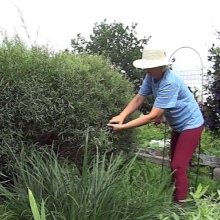
Reproduction
Willow "Weeping Gnome" is characterized by tenderness and beauty, so many strive to have such a tree on their personal plot. It can be propagated in several ways.
- Seeds. This method cannot be called effective, since the seeds do not germinate well, but it belongs to the possible options.
- Cuttings. This option is the main one. You need to cut off a twig that is only 1 year old, then cut it into several cuttings. It is worth leaving only 2 leaves at the top, and remove all the rest. Be sure to dip the stalk in "Kornevin", because with its help it will take root faster. Planting is best done in a shaded area. After planting, the stalk should be covered with a plastic bottle, only half of it will be enough. The appearance of leaves indicates that the stalk is rooted, so the bottle can already be removed. But you need to remember about watering.
- Layers. This option is also popular, but not guaranteed. Its essence lies in the fact that a young twig should be pinned to the ground, and an incision should be made in the place where it touches the ground. We cover the incision with earth. In the fall, you can expect the rooting of the twig. If roots have appeared, then the branch can already be cut off from the willow and planted in a suitable place.
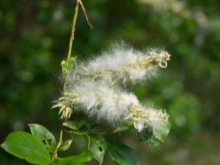

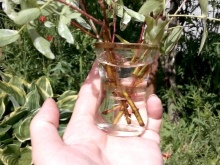
Use in landscape design
Willow is a central element in the landscape design of the local area. She attracts enthusiastic eyes.
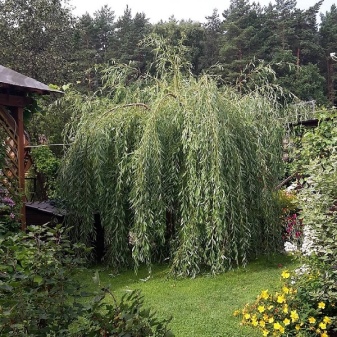
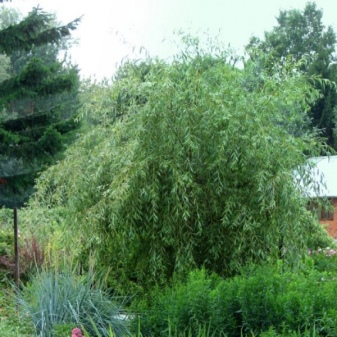
A tree with a weeping crown looks especially beautiful near a reservoir. Its twigs fall to the water, forming an unusual silhouette. One gets the impression that the tree hides some kind of mystery, a slight sadness.

The small size of the Weeping Gnome willow allows the tree to fit perfectly into any landscape design. Willow looks great surrounded by fir trees.

You can find out how the crown of the Weeping Gnome dwarf Willow is formed from the video below.



































































The comment was sent successfully.